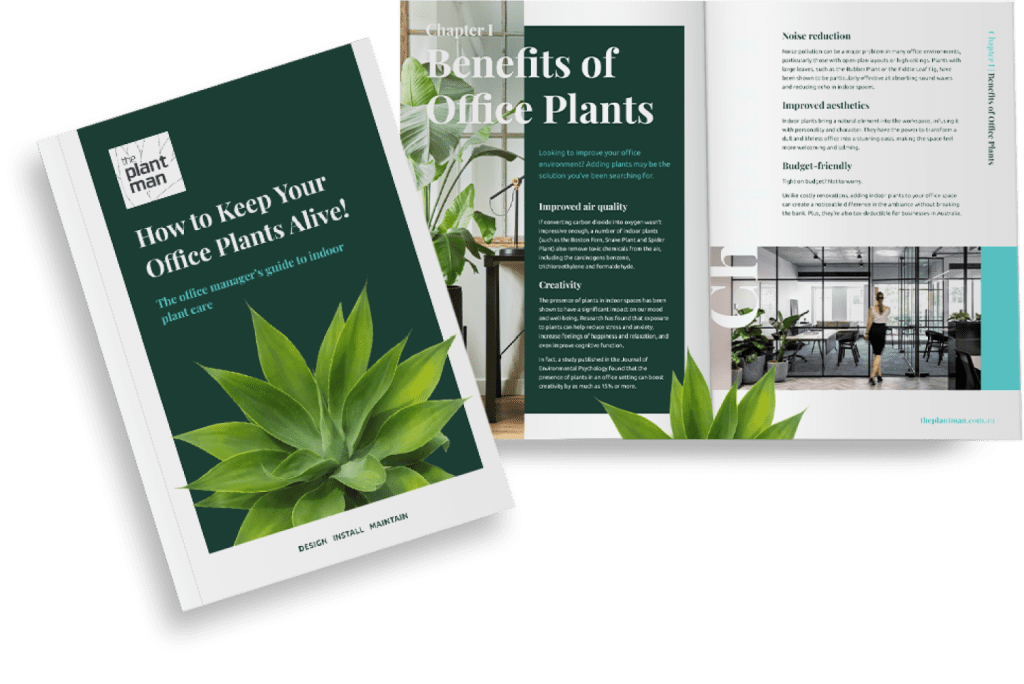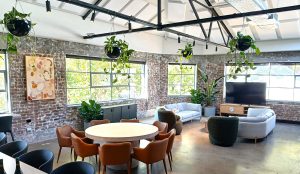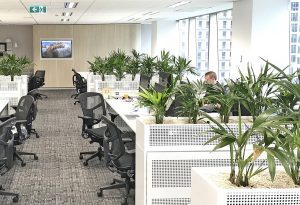From the mythical Hanging Gardens of Babylon to the enchanting English manor houses cloaked in ivy, people have enhanced their outdoor living spaces by growing plants upwards for thousands of years. Vertical garden walls are a modern version of an ancient artform, bringing nature into urban environments and maximising the use of limited space.
What are Vertical Gardens?
Vertical gardens, also known as green walls, are structures where plants or vegetation are grown on building walls, either partially or completely. These gardens can be created by allowing plants to grow from the ground and climb the wall naturally or by using specially designed systems to support soil and plants vertically.
The plant selection for vertical gardens is diverse, allowing for a wide range of species to be used in creating visually appealing and functional green walls. These living walls offer more than just aesthetic benefits; they also provide numerous health advantages.
The Origins of the Vertical Garden Concept
The modern concept of green walls or vertical gardens can be attributed to the pioneering work of botanist Patrick Blanc, a specialist in tropical plants from France. Blanc introduced his innovative vertical garden concept in 1986 with a monumental green wall at the Museum of Science and Industry in Paris. His vision went beyond merely covering walls with traditional planters; he aimed to create a wall where the growing medium itself was integrated.
In the past, implementing and maintaining such a wall was exceptionally challenging. However, advancements in technology and materials have made it not only possible but also easier to achieve this feat. Blanc’s solution involved the development of a closed hydroponic vertical wall garden system, which he refined over time.
Blanc was able to identify different types of plants that thrive in difficult conditions and used them in his garden walls or plant walls. Because of his engineering skills and knowledge of plants and after several successful and acclaimed projects, Patrick Blanc gained international recognition.
Basic Types of Vertical Gardens
So, how do vertical gardens work?
The answer to that question ultimately comes down to the type of the modern vertical garden design. Two basic types of vertical gardens commonly used in home and office settings are:
- Climbing Facade
The climbing facade style involves using trailing plants that hang down and cover the base of a building or home. Wire mesh frames, cables, or trellises are often used to provide support for the plants to climb and grow vertically. This style creates a visually appealing green wall that adds a touch of natural beauty to the exterior of a structure. - Modular Living Walls
Modular living walls are a more sophisticated and versatile style of modern vertical garden designs. They are designed with both aesthetics and functionality in mind. There are two main techniques used in modular living walls:
a. Hydroponic Systems, which utilise a soilless growing medium, such as form or felt, to support the plants. The plants are rooted in this medium, and a nutrient-rich water solution is continuously circulated throughout the system, providing the necessary nourishment.
b. Soil-Based Systems, which involve using containers or pockets filled with soil as the growing medium for the plants. These containers or pockets are mounted onto a framework or structure, creating a vertical arrangement.
Vertical Garden Benefits
Since his first green wall, Patrick Blanc has created vertical wall gardens in Singapore, Sydney’s Central Park, the New York Botanical Garden, Bangkok and more. In interviews, Patrick has stated that his mission is to bring nature back into towns and cities, which is especially important nowadays since most of the world’s population lives in urban environments and many have lost touch with nature. At the same time, sustainability is important, both as a goal in itself and because of practical reasons.
How Are Green Walls Sustainable?
Mitigating Urban Heat:
- One of the key sustainability advantages of green walls is their ability to mitigate the urban heat island effect. In densely populated urban areas, concrete and asphalt surfaces absorb and retain heat, leading to increased ambient temperatures. Green walls act as natural insulators, providing shade and cooling effects. The plants on the walls release moisture through transpiration, which evaporates and cools the surrounding air. By reducing ambient temperatures, green walls help create a more comfortable and energy-efficient environment while also improving a space’s green star rating.
Surface Protection:
- Outdoor green walls provide protection to the building’s surface. The plants act as a barrier against direct exposure to sunlight, rain, and other environmental factors, shielding the building from potential damage and extending its lifespan.
Improved Air Quality:
- Plants play a vital role in purifying the air by absorbing carbon dioxide and releasing oxygen through photosynthesis. Green walls enhance this natural air purification process in urban areas where air pollution is a significant concern. The plants filter pollutants and particulate matter from the air, improving overall air quality.
Vertical Plant Walls in Offices
Vertical garden concepts offer a wide range of benefits to offices. One major vertical garden benefit is their ability to maximise the use of limited space. In urban settings where floor space is often at a premium, vertical plant walls provide a creative solution to incorporate greenery without sacrificing valuable square footage. By utilising vertical surfaces, such as walls or dividers, these gardens allow for the integration of plants in an efficient and visually appealing manner.
In addition to their space-saving qualities, modern vertical garden designs made from air purifying indoor plants offer numerous benefits to office environments outside of the typical benefits of indoor plants. Because of their larger size, they dramatically enhance the overall air quality, removing harmful pollutants and releasing oxygen. Improved air quality contributes to better health and well-being among employees, reducing sick days and increasing overall productivity. On a similar note, the mere presence of greenery and plants for stress relief in a workspace can create a more serene and relaxed atmosphere.
With our expertise in vertical plant wall design and maintenance, The Plant Man creates captivating vertical garden plants in Australia that enhance the aesthetics and ambiance of any office setting. Our team of experts handles watering, fertilisation, pruning, and pest control, ensuring the long-term vitality and beauty of the living walls. Contact us to find out how we can create something calming, beautiful, and practical for you!
Related article: Vertical gardens for offices











